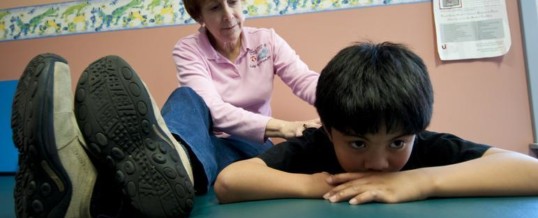
#1: Get Organized
Here are a few specific tips to help –
- Try using one color folder per school. For each school in which you work, use only one specific color folder.
- In each student’s file, keep a general information page including goals. There are several free versions of this from TeachersPayTeachers.
- Keep a binder for all your daily notes. Using file folder dividers with tabs, write the student’s name on the file folder tab. Try to keep it in alphabetical order to quickly find a student’s name.
- Keep a file folder with your most popular handouts in your bag. When teachers or parents need extra information on a popular topic you will have it all at your fingertips.
- Keep a pack of sticky notes ready to jot down a note or reminders. At the end of the day transfer any information on the sticky note to the proper location.
- Schedule a meeting with yourself at the end of the week to stay organized. Create a time slot in your schedule at the end of the day (or at home) to sit down go through all the important papers from the week and re-organize to get ready for the upcoming week. It will be a time saver in the long run.
#2: Arrange Your Therapy Space
This can mean so many different things to different therapists. Perhaps you are lucky enough to actually have a therapy room. Design your space with universal design principles to set a good example and help all children that come to the therapy room. Want to make it look nice? If your therapy space is a hallway or small closet start setting up your car. Clean it and organize it so that you have space for all your equipment as you travel.
#3: Learn About The Students’ Curriculum
This may sound like a huge undertaking but at least start out by understanding what is expected of the students on your caseload. Things have changed so much over the last several years about what is expected of children to learn. As school-based therapists, our job is to help students achieve their educational goals. That job is impossible if we do not fully understand what they need to learn.
#4: Check Current Goals
Learn about each of your students. It can be hard to get a clear picture of a student’s skill based on what you read on paper. If you had the student previously, have any skills changed over the summer? If a decline is observed, be sure to collect some data to help justify services over the next summer if needed. If the student has improved, check if goals need to be adjusted.
#5: Observe Students in Their Educational Environment
Observe the student in the classroom, on the bus, in the cafeteria, etc. Can the student physically access all the materials? Are there certain modifications that need to be made to the environment to make it easier for the student? Sometimes as therapists, we focus on what we can do to help with specific therapeutic interventions to help a student improve his/her skills. We need to remember the quick fixes that can be done to the environment around the student to help achieve goals.
#6: Collaborate with Teachers, Parents, Students School Staff
Introduce yourself to all of the team members. Explain how you can offer help in certain areas for students and encourage the team members to contact you if they have any questions. Don’t forget to collaborate with the most important team member – the student!
#7: Communicate
Communication is different than collaboration. Inform students, parents and school staff what you are working on with the student and offer suggestions of how they can help.
#8: Establish Goals
Keep it nice and simple and try filling out a worksheet on how you can improve this school year.
#9: Don’t Judge
If you have new students on your caseload, do not judge them solely on what you read on paper, especially their motor skills. Don’t assume that a child cannot achieve a certain skill. Take the time to get to know each student (see tip #5).
#10: Be Prepared
Children tend to exhibit inappropriate behavior when they become complacent during unstructured times. It is critical to plan out in advance exactly what goals you will be addressing during the session and design an activity focusing on those goals. Always have a few extra activities prepared. Some activities that you may think will take 20 minutes may take only 5 minutes, leaving you with unstructured time. Make sure that students can complete the tasks you will be using while being challenged.
JUN
2018


About the Author: